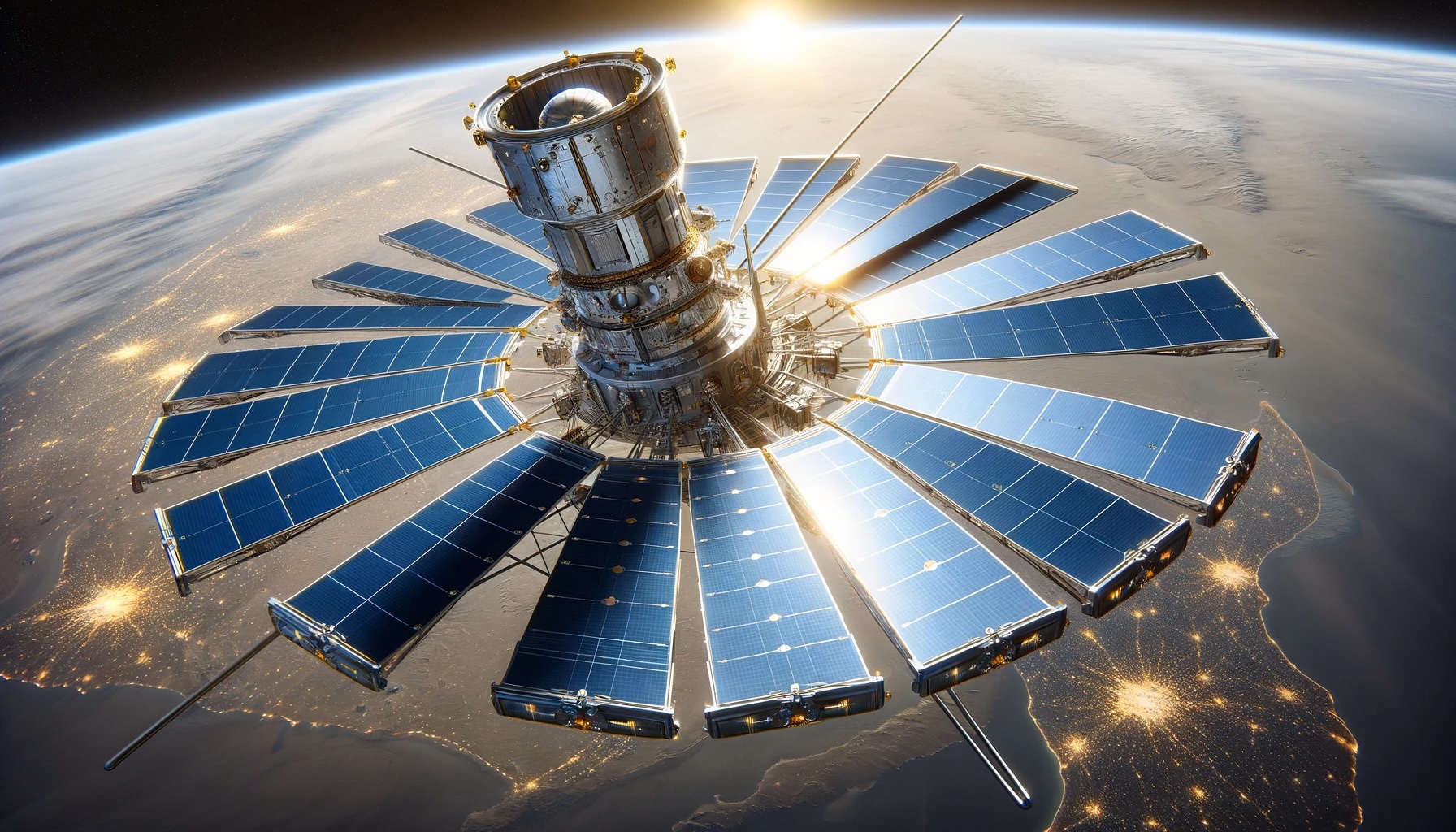Space-based solar power (SBSP) has been in the news recently, with the successful test of a solar power demonstrator in space taking place last summer. While the concept is fundamentally sound, there are plenty of hurdles to overcome if the technology is to be widely adopted – not the least of which is cost. NASA is no stranger to costly projects, though, and they recently commissioned a study from their internal Office of Technology, Policy, and Strategy that suggests how NASA could continue to support this budding idea. Most interestingly, if the technological cards are played right, SBSP could be the most carbon-efficient, lowest-cost power source for humanity by 2050.
To be clear, there are a lot of hurdles to overcome to get to that point, but first, let’s start with what the report looked at. Its primary concern was two-fold – how expensive the electricity from a power satellite is and how high its lifecycle carbon emissions are, including those introduced to the atmosphere to get it into space in the first place.
Those two data points were analyzed for two different systems, one modular one called the SPS-Alpha Mark-III suggested by prolific inventor John Mankins, which is a little more theoretical, and another by a group of Japanese researchers called the Tethered-SPS that uses a more traditional design. In most of the calculations the report provides, the SPS-Alpha Mark-III outperforms the more conventional system. Still, there are some technical hurdles to its implementation – though nothing so complicated as some of the others discussed therein.
The results report presents are not pretty for SBSP. Given their current levels of technical maturity, both solutions produce electricity that is more expensive than any existing technology. Not only that, even the more climate-friendly SPS-Alpha Mark-III is still comparable only to solar power in terms of climate impact and is beaten out by things like hydropower or even nuclear fission. So, some work needs to happen before there is any commercial incentive to adopt this technology.
Let’s tackle cost first – two big sources are the cost of getting the satellite into orbit and maintaining it when it’s up there, known as in-space assembly and maintenance (ISAM). The report even provides some allowances for the launch cost to be lower than it currently is (without fully functional Starships). But even with that lower cost, 863 launches to geosynchronous orbit for the smaller of the two systems will likely not allow any system to be cost-competitive with terrestrial alternatives.
Also, as of right now, no ISAM infrastructure could support such a massive satellite. So if any part of the system fails while in space, which, given the nature of the environment, is inevitable, there wouldn’t be any feasible way to fix it. Like lowering launch costs, this, too, is being worked on by several commercial entities. However, the inability to maintain infrastructure in orbit inexpensively will plague cost assessments of any large project in the near future.
Credit – SFIA YouTube Channel
As for greenhouse emissions – most of those are caused by the launches required to get into space. There haven’t been a lot of studies done on the effects of emitting combustion products into the high atmosphere, especially in terms of their impact on the environment. But it wouldn’t be surprising if that wasn’t good. But even without that, just the sheer amount of greenhouse gases that must be emitted to lift all of the weight of these systems into space would make it hard to compete with low-carbon alternatives.
These difficulties might sound like a death knell for building a SBSP system in the near future. But there is a silver lining. Using a statistical methodology sensitivity analysis, the report’s writers created a scenario where SBSP is the most cost-effective with the least greenhouse gas emissions of any energy source available in 2050.
To do so requires some great leaps in technology; in particular, using other technologies, like increased ISAM and ion drives to move the parts from low Earth orbit (where Starships can be reusable) to geostationary orbit, can dramatically limit the number of launches needed. Other improvements include optimistic standards for cost analysis, such as lower launch costs (though the $500/kg the study uses is far lower than even more optimistic estimates of what Starship can do) and increasing the lifetime of the equipment itself.
Credit – Financial Times YouTube Channel
Ultimately, this analysis goes to show that, with a little bit more development, SBSP could be not only cost-competitive in 25 years but also the best option for low-cost, environmentally friendly power. However, the report’s purpose was to suggest potential action items to NASA’s leadership, and its outcome was an underwhelming “keep an eye on it.” It rightfully points out that plenty of the activities that would go into making SBSP as potentially fantastic as it can be, such as lower launch costs, ion drives, and improved ISAM systems, are already on NASA’s radar and are actively under development, with varying levels of support.
The authors suggest looking into the technology every few years, as NASA has been for decades at this point, to see if any specific technical hurdles aren’t being addressed as part of other projects. For now, they didn’t find any. But plenty of technologies that weren’t even mentioned in the report, such as asteroid mining or deployable lightweight structures, could also fundamentally change the economic calculations. One thing is for sure – whatever future reports on the viability of SBSP will have plenty of new advances to consider.
Learn More:
NASA OTPS – New Study Updates NASA on Space-Based Solar Power
NASA OTPS – Space-Based Solar Power
UT – New Satellite Successfully Beams Power From Space
UT – Could Space-based Satellites Power Remote Mines?
Lead Image:
DALL-E’s interpretation of a SBSP system.

